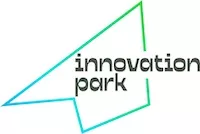Compliant educational content is a major topic in the digital age. How do companies prove their integrity online?
The internet is a goldmine of information at people's fingertips. But many fail to consider who posts this content and whether it's dependable. That's why search engines step in to install safety guidelines.
Rules are industry-specific and vary with the country and search engine. Keeping your brand compliant from day one means avoiding trouble as they expand.
Join us to learn about compliance in educational content across industries. We don't stop at general guidelines, either. You'll find a case study on healthcare compliance to illustrate our points.
WHAT IS EDUCATIONAL CONTENT?
Educational content is the type of content that teaches audiences something new. It takes many forms, from short-form how-to's to in-depth e-books from licensed professionals.
This content encompasses all materials designed to inform and instruct. Brands might use it to engage customers, build authority, and demonstrate social responsibility.
Educational content permeates modern life, including the digital landscape. It's a cornerstone of marketing or a complete service.
The interface between education and markets is dynamic. It can be a vertical B2B tool or a customer-centric, lowest-common-denominator approach. The goal is always to empower people to make informed decisions.
That's why accurate and comprehensible information is a must-have.
INTRODUCING COMPLIANCE IN EDUCATION
Compliance in education ensures the integrity, safety, and efficacy of resources.
The idea is two-fold. It's a way to avoid legal issues while publishing online. It also upholds your reputation among audiences.
The pillars of compliance are intellectual property, accuracy, data privacy, and accessibility.
Respecting copyright laws is paramount, and breaking them leads to legal consequences. The same goes for dangerous misinformation, and lacking up-to-date sources undermines authority. Data protection regulations (like the CCPA) are necessary to keep sensitive information safe.
General standards of quality and compliance for web-based education include:
- Ownership. Each piece of content requires a named subject matter expert. That way, the right people can take accountability for any breaches.
- Value. Educational content must be customer-focused and meet a clear goal. Pieces prone to ROT (redundancy, outdatedness, and triviality) should get periodic updates.
- Accuracy. Content must be fact-checked and resource-reliant. The message should be clear and not susceptible to misinterpretation.
- Accessibility. Prioritize readability, use alt text for images, and add closed video captions. These practices ensure folks from different demographics can use your content.
Beyond these general rules, every industry faces a myriad of specifics.
COMPLIANT CONTENT ACROSS INDUSTRIES
It pays to introduce educational content into your marketing strategy. It adds value, builds a positive reputation, and presents an opportunity for community-building.
But these benefits only come if you remain compliant.
Compliance takes different forms depending on the industry. The rules are loose in some and super-strict in others. Let's examine some markets from the latter category to give you an idea of what to expect.
eLearning
With the post-pandemic boom of online education, eLearning became all the rage. It produces traditional educational content in modern, convenient formats.
Compliance is platform-specific but has some general rules. For instance, most companies use learning management systems to oversee learning.
Beyond meeting student needs, institutes face quality regulations. They must hire subject experts for the content to provide authority and quality. The demand for cultural awareness, various learning styles, and multimedia is rising.
Accessibility compliance matters in education. Web Content Accessibility Guidelines (WCAG) is the document to follow. It includes text descriptions of visuals and sign language interpretations of pre-recorded pieces.
Energy & Environmental Protection
Compliance in the energy industry is vital in the 21st century. The rules relate to data privacy, energy efficiency, and advertising accuracy.
More energy companies transitioned to smart technology. For this reason, they must get consent for gathering data.
Energy efficiency standards are government-dependent but must be proven. Labels like ENERGY STAR guarantee legitimacy. Green Guides or a similar document must support environmental claims.
Advertising accuracy means transparent pricing, honest claims, and no misleading statements. Renewable energy certificates and reporting help avoid market manipulation and fraud.
Ethical marketing in this sector involves the social impact of energy production. Compliance may include supporting green community initiatives.
YMYL Industries
Google introduced the YMYL standard in 2019. Today, it's commonplace on search engines. The acronym means "your money or your life" and refers to content that impacts health and finances.
The YMYL framework boosts quality content. It's about credibility, trustworthiness, and authenticity. Google seeks proof of expertise and authority on websites in this category. It promotes those who provide it and penalizes those who fail to.
Which brands belong to YMYL? It's a broad category but primarily affects:
- Medical content
- Legal advice
- Financial content
- News and current events
- Parenting topics
The medical industry is under particular scrutiny by the YMYL algorithm. Let's focus on it as a case study for compliant educational content.
YMYL CASE STUDY: THE HEALTHCARE INDUSTRY
Healthcare-related content is tricky to navigate. It's a balance between exciting the customer and not crossing into sensationalism. You must establish your expertise and not break YMYL rules.
There's also HIPAA compliance to consider.
The Health Insurance Profitability and Accountability Act (HIPAA) is a federal law. It introduced national standards for protecting sensitive patient information. It allows relevant use of patients' data while safeguarding their privacy.
HIPAA makes perfect sense, but it makes marketing difficult.
Low-risk content with healthcare experts as the subjects is the way to go. Analytics can guess general trends but not target specific audiences.
These rules apply to general medical content. What about entities that aren't clinics or insurance contractors? The healthcare sphere is broadening, bringing novel procedures.
The Growing Medical Sector
The healthcare industry is massive in the US. Different companies and institutions cooperate to ensure quality care and satisfaction. Health tracking and early diagnostics tools involve patients in the medical process.
The Internet of Medical Things employs technology to track people's vitals remotely. It connects patients to physicians, helping early identification and treatment. Such tech needs strict security standards, made trickier with machine learning.
HIPAA compliance remains pivotal to preventing data breaches in tech-based healthcare.
Beyond technology and remote patient monitoring (RPM), medical companies became commercialized. Pharmaceutical brands, alternative medicine institutions, and wellness clinics grew in size and popularity.
Pharmaceutical companies must meet accreditation standards to qualify for the YMYL niche. Drug safety, regulation, and disclosures of untested therapies are crucial.
Alternative medicine institutions offer treatments outside of traditional Western options. Licensing, informed consent, and finding qualified practitioners are their top challenges.
Wellness clinics focusing on lifestyle and preventative care aren't off the hook. They must meet the same healthcare quality standards as hospitals. Ethics and patient privacy are central.
Changing Client Demographics in Healthcare
The demographics of the US are changing, and this affects patient profiles. Notable shifts are aging populations, ethnic and racial diversity, and poverty. Care providers must adapt to different types of patients for the best results.
Population aging brings demand for specialized care and chronic disease management. From RPMs to alternative treatments, we need additional options to help this demographic.
The Food and Drug Administration (FDA) is slow to approve new treatments. You can market these services, but only by jumping through regulatory hoops.
Inclusivity requires experts to understand different racial and ethnic groups. Brands must be conscious and culturally sensitive to thrive. Their educational content can affect mainstream medicine, too.
Poverty's on the rise, with fewer people able to afford traditional care. Many turn to online sources to find cheaper cures, increasing the need for accuracy. The language, offers, and social actions of healthcare companies are of great importance.
Navigating Compliance in Healthcare Education
Whether content is a service or a marketing tool, compliance remains vital. Study state laws, examine platform requirements, and focus on transparency while brand-building.
The best healthcare companies satisfy Google's E-A-T standards. Although search engine-related, these standards are an excellent base for high-quality, compliant content.
Let's see how you can meet these three criteria.
Expertise
Search engines and users want to see your knowledge within a specific field. Find your niche and be crystal clear about your purpose to demonstrate expertise.
For instance, if your page is about nutrition for health, write only about related topics. Recipes are good, but opinion pieces on the latest fashion styles aren't. Interlink your content for added value whenever possible.
Think about your niche in terms of pillars. This approach helps you focus your content and avoid splaying out.
Let's return to the nutritionist example. They could share food facts, reasons to eat well, and tips for specific health conditions. Each category should contain as many informative, valuable posts as possible.
Branching out and market expansion should be gradual. Only add a pillar to your content strategy when you become a recognized expert in the existing ones.
Authority
Authority means proving you have qualifications, accreditations, and experience in the niche. Your website bio should contain this information and evidence of it. List and link your degrees, certificates, and any guest appearances you might've made.
Press coverage, positive reviews, and large audiences also prove authority.
Beyond personal authority, each piece of content you publish should be data-backed. Link your blogs to published research papers, relevant news articles, and recognized industry resources. Share a list of further reading under articles.
Trustworthiness
Trustworthiness means maintaining safety and legitimacy on your website. It comes down to security and social proof to back your claims and promises.
Regarding website security, an SSL certificate is a must-have. It protects platforms from hackers acquiring personal information. Google de-prioritizes sites without SSL; users are less likely to enter them.
Testimonials are another way to increase your trustworthiness. Customers and Google tend to trust the opinions of real people more than marketing speak. Solicit reviews across platforms, and don't delete negative ones. Instead, proactively address them to showcase your dedication.
COMPLIANCE: KEY TAKEAWAYS & NEXT STEPS
Compliance in educational content helps companies flourish. It trains content teams to introduce rigorous procedures and strategize for content quality. The culture of accountability deters hurdles down the line.
Remember these takeaways:
- Compliance is multifaceted. It spans a spectrum of requirements, from accessibility to data protection and authority. Consult legal and marketing experts to cover all the bases.
- Compliance is industry-specific. Different industries have varying levels of education compliance requirements. Learn the basics, then look into specifics.
- Google is a compliance tool. As the world's largest search engine, Google imposes all-encompassing standards. Follow YMYL and E-A-T, and you're head and shoulders above the competition.
Stay informed, continue learning, and seek feedback to remain above board. Invest in expert marketing assistance to see continual, compliant growth.
The content of this article is intended to provide a general guide to the subject matter. Specialist advice should be sought about your specific circumstances.

